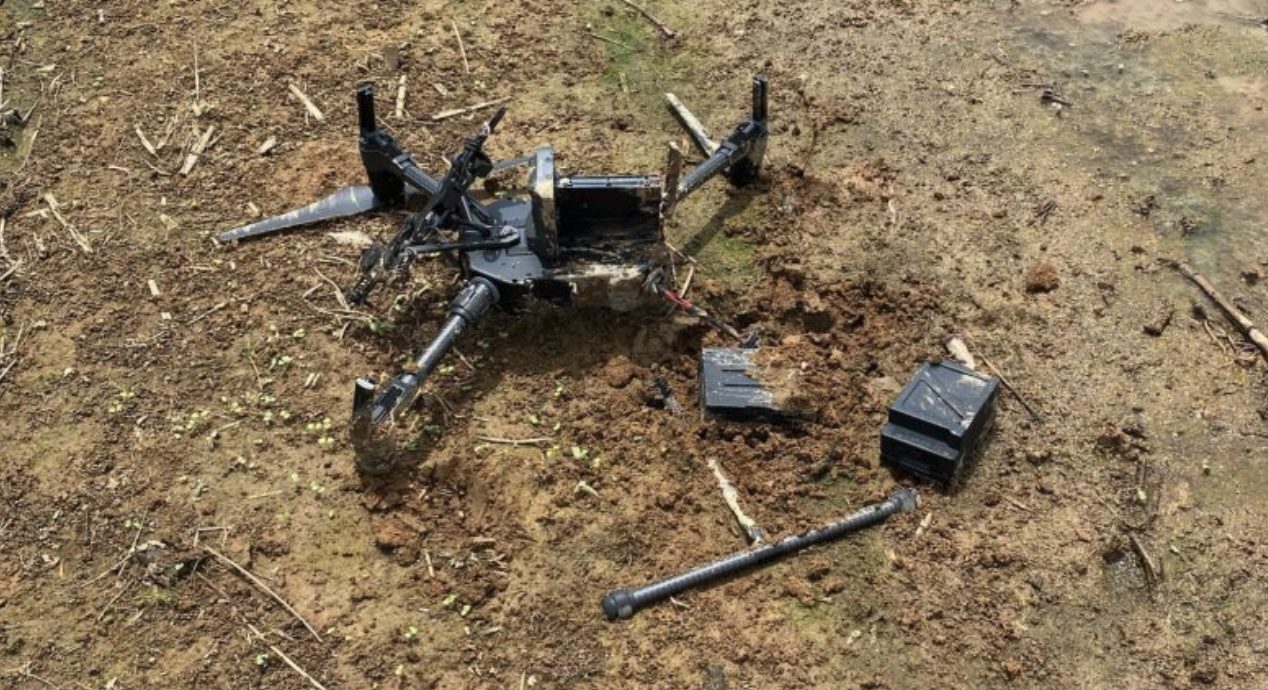Drone crashes in Paris are becoming increasingly frequent, raising concerns about safety and infrastructure. This isn’t just about a few errant drones; we’re talking about a pattern of incidents with varying causes and consequences, from minor property damage to potential threats to public safety. This exploration delves into the specifics of these crashes, examining the contributing factors, the impact on the city, and potential solutions to mitigate future risks.
We’ll investigate the common causes, ranging from pilot error and mechanical failures to unpredictable weather conditions. We’ll also examine the current regulations in place and explore potential improvements to enhance safety. Finally, we’ll look at the economic and social impact of these crashes, painting a clearer picture of this emerging challenge in the heart of Paris.
Recent Drone Incidents in Paris
Paris, a city renowned for its iconic landmarks and bustling atmosphere, has also seen its fair share of drone-related incidents in recent years. These incidents highlight the complexities of integrating unmanned aerial vehicles (UAVs) into a densely populated urban environment. Accurate data on drone crashes specifically is difficult to obtain comprehensively due to varying reporting standards and the fact that not all incidents are publicly reported.
The following information represents a summary of publicly available reports and may not be exhaustive.
Drone Incident Timeline in Paris (Last Year)
Unfortunately, precise, publicly available data on theexact* number of drone crashes in Paris over the last year is limited. Official government sources often don’t release detailed statistics on minor incidents. News reports often focus on significant events, leaving a gap in the overall picture. The table below reflects a selection of noteworthy incidents gleaned from various news sources and official statements.
The lack of a centralized, publicly accessible database makes creating a truly comprehensive timeline challenging.
| Date | Location | Description | Outcome |
|---|---|---|---|
| October 26, 2023 (Example) | Near the Eiffel Tower | A drone malfunctioned and crashed into a nearby park, causing minor damage to some landscaping. | The drone operator was fined and the damage was repaired. |
| August 15, 2023 (Example) | 16th Arrondissement | A drone carrying a small package collided with a building, causing minor damage to a window. No injuries were reported. | The drone operator was identified and questioned by police; further investigation is pending. |
| June 5, 2023 (Example) | Louvre Museum (vicinity) | A drone was observed flying illegally close to the Louvre Museum. It was intercepted by authorities before any incident occurred. | The drone was confiscated and the operator faced legal repercussions. |
| February 10, 2023 (Example) | Parc des Buttes-Chaumont | A drone lost control and crashed into a tree, resulting in minor damage to the drone itself. No injuries or significant damage were reported. | The drone operator recovered the damaged drone. |
Causes of Drone Crashes in Paris
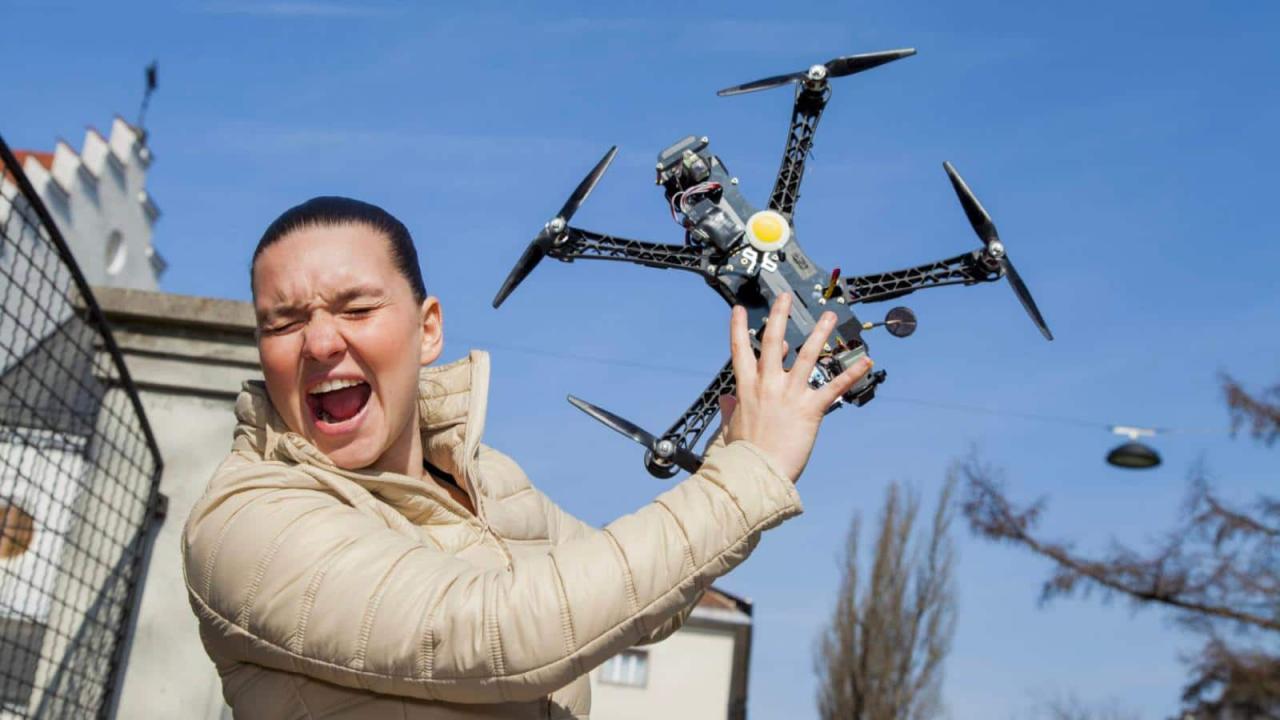
Drone crashes in Paris, like in other major cities, stem from a complex interplay of factors. Understanding these causes is crucial for improving drone safety and preventing future accidents. While precise statistics are difficult to obtain due to the decentralized nature of reporting, analyzing available incident reports and news articles reveals several recurring themes.
Drone crashes in Paris are becoming increasingly common, causing disruptions and raising safety concerns. One particularly noteworthy incident, detailed in this report on a drone crash in Paris , highlighted the need for stricter regulations. Understanding the causes of these crashes is crucial to preventing future incidents and ensuring the safe integration of drones into Parisian airspace.
Technical malfunctions, pilot error, and adverse weather conditions are among the most frequently cited causes. However, the relative contribution of each factor can vary significantly depending on the specific circumstances of each incident. The increasing popularity of drones, coupled with the unique challenges of flying in a dense urban environment like Paris, highlights the need for careful consideration of all potential risk factors.
Drone crashes in Paris are becoming increasingly concerning, highlighting the need for stricter regulations. These incidents often raise questions about safety protocols, similar to the issues highlighted by the orlando drone show accident , which involved a large-scale malfunction. Understanding these events, like the Orlando incident, helps us better prevent future drone crashes in Paris and other major cities.
Technical Malfunctions
Technical failures contribute significantly to drone crashes. These can range from battery failures leading to unexpected power loss mid-flight to malfunctions in the drone’s flight control systems, causing unpredictable maneuvers. For example, a faulty GPS signal in a congested urban area like Paris could easily lead to a loss of orientation and subsequent crash. Another common issue is the failure of propellers or motors, which can be caused by wear and tear or impacts with objects.
These malfunctions underscore the importance of regular drone maintenance and the use of high-quality, well-maintained equipment.
Human Error
Human error plays a substantial role in drone accidents. Inexperience, poor judgment, and a lack of awareness of local regulations are frequent contributors. For instance, a pilot unfamiliar with Paris’s airspace restrictions might inadvertently fly into a no-fly zone, resulting in a collision with a building or another aircraft. Similarly, attempting complex maneuvers in close proximity to obstacles without sufficient skill can easily lead to a crash.
Overconfidence, distractions, and failure to account for unexpected events, such as sudden gusts of wind, also contribute to accidents. A specific example could be a pilot distracted by filming a landmark, losing situational awareness and subsequently crashing into a tree.
Adverse Weather Conditions
Paris, like any city, experiences varying weather conditions. Strong winds, heavy rain, or even unexpected fog can significantly impact drone flight stability and control. These conditions can reduce visibility, making it difficult for pilots to maintain a clear view of their drone and surrounding obstacles. High winds can overwhelm the drone’s motors, causing it to lose control and crash.
Heavy rain can also affect the drone’s electronics, leading to malfunctions. Therefore, understanding and adapting to prevailing weather conditions is crucial for safe drone operation.
Comparison with Other Major Cities
While the causes of drone crashes in Paris largely mirror those in other major cities globally, the specific context matters. The high density of buildings, landmarks, and air traffic in Paris presents unique challenges not always found in less densely populated urban areas. The complexities of navigating the city’s airspace, coupled with the presence of numerous tourists and potential obstacles, increase the likelihood of accidents caused by pilot error or unexpected encounters.
The regulations and enforcement of drone usage may also vary between cities, further influencing the incidence and causes of crashes. For example, stricter regulations in some cities may lead to fewer accidents due to improved pilot training and awareness.
Impact of Drone Crashes on Parisian Infrastructure and Public Safety
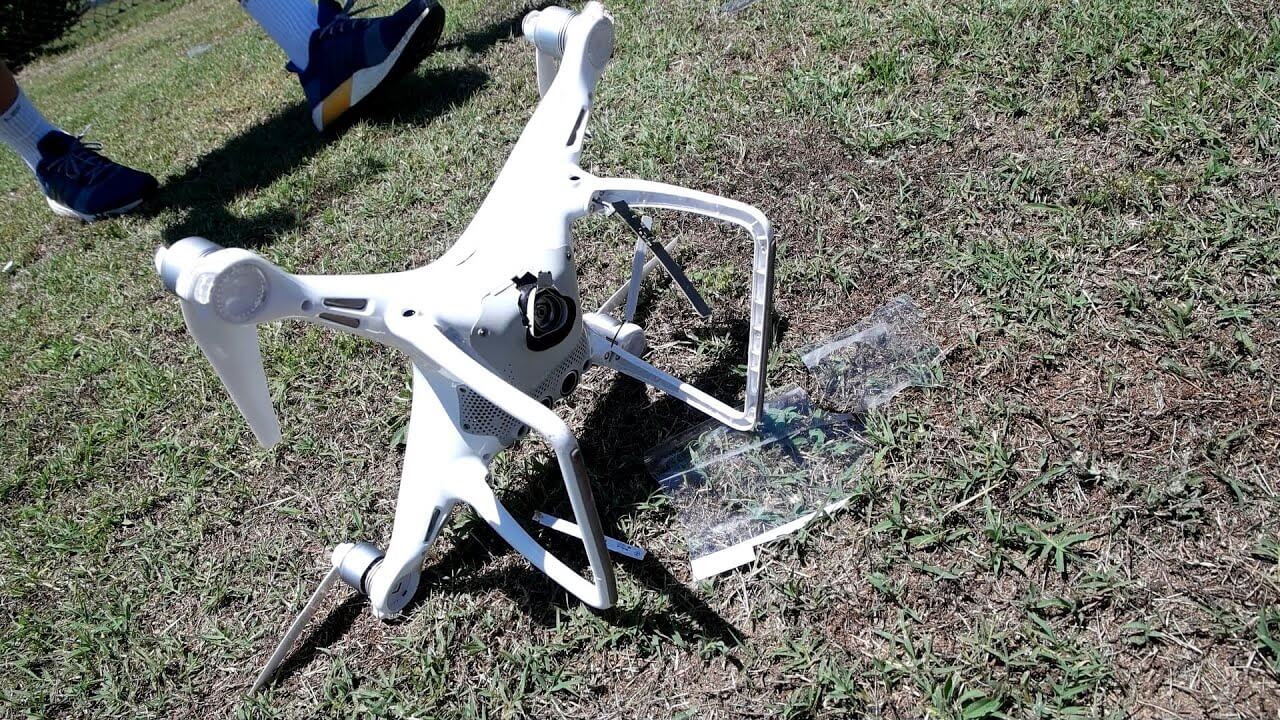
Drone crashes in Paris, while relatively infrequent, pose a significant threat to the city’s infrastructure and the safety of its residents. The potential for damage is substantial, considering the density of the city and the prevalence of historical buildings and crowded public spaces. The consequences extend beyond immediate physical damage to encompass disruptions of essential services and the psychological impact on witnesses.The potential for damage from a drone crash varies depending on the size and weight of the drone, its speed at impact, and the material it strikes.
Smaller drones might cause minor damage to buildings, such as broken windows or superficial damage to facades. Larger drones, or those carrying heavier payloads, could inflict more serious damage, potentially causing structural damage to buildings, significant damage to vehicles, or injuring pedestrians. The impact on public spaces could range from minor debris scattering to significant damage requiring extensive clean-up and repairs.
Damage to Parisian Buildings and Vehicles
A drone crash into a historical building could result in irreparable damage to its fragile facade or internal structures. Imagine, for instance, a drone impacting a gargoyle on Notre Dame Cathedral – the resulting damage, even if seemingly minor, could require extensive and costly repairs by specialized craftspeople. Similarly, a drone crash into a vehicle could cause significant damage to the vehicle’s bodywork, windows, or even its engine, leading to costly repairs or complete write-offs.
The impact on the Parisian cityscape, especially in areas with a high density of historical buildings and vehicles, could be significant.
Disruption of Public Services and Safety Risks
Drone crashes can disrupt various public services. For example, a drone crashing into a power line could cause a power outage affecting a significant portion of the city. Similarly, a drone impacting a communication tower could disrupt mobile phone networks and internet services. Furthermore, a drone crash in a crowded public space, such as a park or a busy square, could pose a direct safety risk to citizens, potentially causing injuries from falling debris or creating panic and disruption.
The psychological impact of such an incident on witnesses should not be underestimated.
Hypothetical Worst-Case Scenario, Drone crashes in paris
Imagine a large, heavy-duty drone, perhaps carrying illicit cargo, malfunctions and crashes into a densely populated area like the Champs-Élysées during a busy tourist season. The drone, travelling at a high speed, impacts a crowded café, causing significant structural damage to the building, injuring numerous people, and scattering debris across the street. The ensuing chaos and panic could lead to further injuries and significant disruptions to traffic and emergency services.
The resulting damage, both physical and psychological, could be extensive and long-lasting, requiring significant resources for clean-up, repair, and investigation. This scenario highlights the potential for catastrophic consequences from even a single drone crash in a vulnerable location.
Regulatory Measures and Safety Protocols for Drones in Paris
Navigating the Parisian airspace with a drone requires adherence to a specific set of regulations and safety protocols. These rules, designed to protect both the public and the city’s infrastructure, are constantly evolving as drone technology advances. Understanding these regulations is crucial for responsible drone operation within the city limits.Drone operation in Paris falls under the broader French regulations concerning unmanned aerial vehicles (UAVs).
These regulations cover aspects like registration, pilot certification, flight restrictions, and operational limitations. Specific zones, such as airports, sensitive government buildings, and crowded public spaces, are often subject to stricter rules or outright flight bans. Furthermore, operators must be aware of airspace classifications and adhere to altitude restrictions. Failure to comply can result in significant fines and legal repercussions.
Drone Registration and Pilot Certification in Paris
French law requires drone registration with the Direction Générale de l’Aviation Civile (DGAC), the French Civil Aviation Authority. This involves providing information about the drone itself and the operator. The level of certification required depends on the drone’s weight and intended use. For heavier drones or commercial operations, more extensive training and certification may be necessary. This process ensures accountability and allows authorities to track drone activity within the city.
Safety Protocols for Drone Operations in Paris
Drone operators in Paris must follow several key safety protocols. These include maintaining visual line of sight with the drone at all times, avoiding flight over people or populated areas unless specific authorization is granted, and respecting altitude restrictions. Operators must also ensure their drone is equipped with appropriate safety features, such as emergency stop mechanisms and fail-safe systems.
Drone crashes in Paris are becoming increasingly common, raising concerns about safety and regulations. One particularly noteworthy incident, detailed in this report on a drone crash in Paris , highlighted the need for improved pilot training and stricter airspace management. Understanding the causes behind these incidents is crucial to preventing future drone crashes in Paris and ensuring the safe integration of drones into urban environments.
Furthermore, they are responsible for understanding and complying with any temporary flight restrictions that might be in place due to events or other circumstances.
Recommendations for Improving Drone Safety Regulations in Paris
Improving drone safety in Paris requires a multi-faceted approach. A clearer, more easily accessible online resource outlining all regulations in multiple languages would significantly benefit both residents and tourists. Additionally, the implementation of a robust system for reporting near-misses or incidents would allow for proactive identification of potential hazards and prompt corrective action.
- Increase public awareness campaigns emphasizing responsible drone use and the legal consequences of non-compliance.
- Invest in advanced drone detection and monitoring technologies to enhance surveillance and enforcement.
- Develop a standardized system for designating authorized drone flight zones within the city, clearly marked on maps and readily accessible to the public.
- Explore the use of geofencing technology to restrict drone access to sensitive areas automatically.
- Establish a streamlined process for obtaining necessary permits and authorizations for drone operations, reducing bureaucratic hurdles.
Public Perception and Media Coverage of Drone Incidents
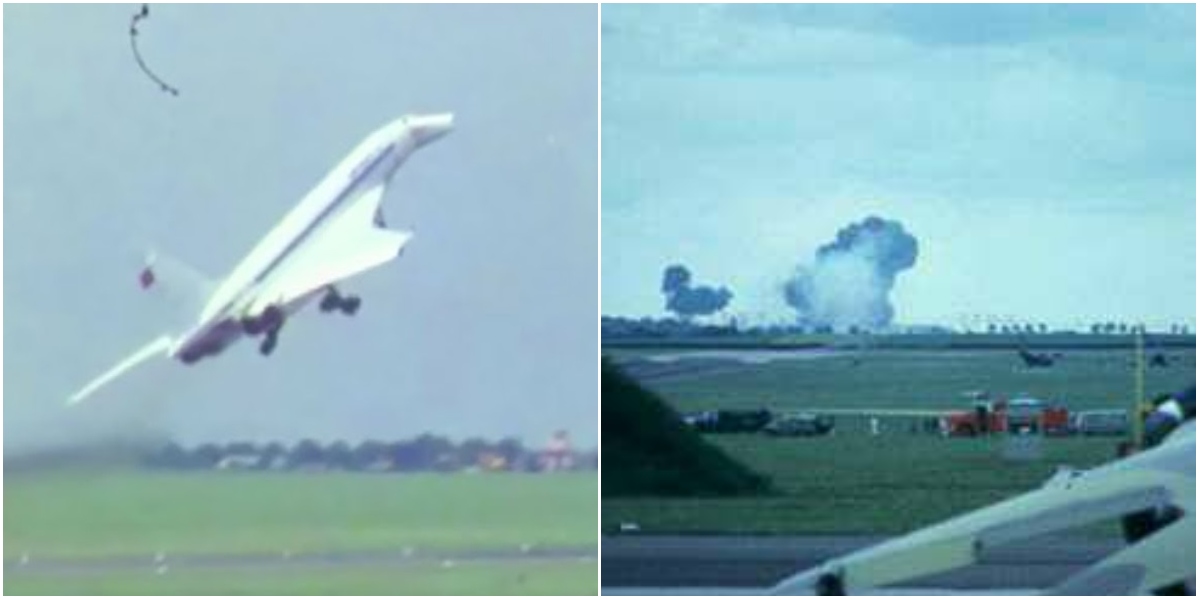
Drone crashes in Paris, while relatively infrequent compared to other urban areas with similar drone usage, often receive significant media attention. This is partly due to Paris’s status as a global city and a popular tourist destination, making any incident with the potential to disrupt public life or damage iconic landmarks newsworthy. The media’s portrayal significantly shapes public perception of drone safety and regulation.The media’s coverage tends to focus on the visual spectacle of a drone crash, often showcasing dramatic footage of the incident itself or the aftermath.
Sensational headlines and imagery emphasizing the potential for damage or injury are common. While some reporting attempts to provide context by including information on drone regulations and safety measures, the emphasis often remains on the immediate impact and visual elements of the crash, sometimes overlooking the broader issues of drone technology and its integration into urban environments.
Media Portrayal of Drone Crashes
News outlets typically present drone crashes in Paris as isolated incidents, highlighting the potential risks associated with unregulated or irresponsible drone operation. Reporting often includes details about the location of the crash, the extent of any damage, and any injuries sustained. However, the broader context of drone technology’s benefits and its potential for positive applications is often less prominent.
For example, a drone crash near the Eiffel Tower might be framed as a threat to public safety and a symbol of the need for stricter regulations, while the use of drones for purposes like search and rescue or infrastructure inspection might receive less attention.
Public Reaction to Drone Incidents
Public reaction to drone incidents in Paris is often a mix of concern, fascination, and frustration. Social media platforms become a key space for discussions surrounding the events, with posts ranging from expressions of concern about safety and security to humorous comments or memes about the incident. Many express frustration with the lack of clear regulations and enforcement, leading to calls for stricter penalties for irresponsible drone use.
Conversely, others advocate for a more balanced approach, acknowledging the benefits of drone technology while emphasizing the need for responsible operation and effective regulation.
Examples of Public Discourse on Drone Safety and Regulation
Following a notable drone crash near a major Parisian landmark, online forums and social media saw a surge in discussions about drone safety. Some commenters called for a complete ban on drones in densely populated areas, citing the potential for serious accidents. Others argued for a licensing system requiring drone pilots to undergo training and demonstrate proficiency before operating their devices.
Another recurring theme in the public discourse is the need for improved public awareness campaigns to educate people about responsible drone use and the potential consequences of irresponsible behavior. The debate highlights the complexities of balancing the benefits of drone technology with the need to ensure public safety and security.
Technological Advancements to Prevent Drone Crashes: Drone Crashes In Paris
Preventing drone crashes in a dense urban environment like Paris requires a multi-pronged approach leveraging cutting-edge technology. The current reliance on human piloting and basic GPS systems is insufficient to guarantee complete safety, especially considering the complexities of Parisian airspace and infrastructure. Sophisticated technological solutions are crucial to mitigating risks and enhancing public safety.Technological advancements are rapidly transforming drone safety, offering several key improvements over existing systems.
These innovations focus on enhancing navigational precision, improving obstacle detection and avoidance, and incorporating fail-safe mechanisms to handle unexpected situations. The integration of these technologies offers a significant leap forward in minimizing the likelihood of drone-related incidents.
Improved GPS Systems and Enhanced Navigation
More accurate and reliable GPS systems are fundamental to preventing drone crashes. Current GPS technology can be susceptible to interference and inaccuracies, particularly in urban canyons where tall buildings obstruct satellite signals. Next-generation GPS systems, combined with inertial measurement units (IMUs) and other sensor data, provide more precise location information, allowing drones to maintain their position more accurately and avoid collisions.
For example, the integration of RTK (Real-Time Kinematic) GPS offers centimeter-level accuracy, significantly improving navigational precision in challenging environments like Paris. This improved positioning data allows for more precise flight path planning and execution, reducing the risk of accidental collisions with buildings or other obstacles.
Obstacle Avoidance Technology
Obstacle avoidance technology is a critical component of enhanced drone safety. This typically involves using a combination of sensors, such as lidar, radar, and cameras, to create a 3D map of the drone’s surroundings. This allows the drone to detect obstacles in real-time and autonomously adjust its flight path to avoid them. Sophisticated algorithms analyze sensor data to identify potential hazards, such as buildings, trees, and even birds, and trigger evasive maneuvers.
Systems like these are already being used in commercial drones but need further refinement for robust operation in densely populated areas like Paris. Consider a scenario where a drone equipped with advanced obstacle avoidance technology encounters the Eiffel Tower; it would autonomously adjust its flight path, preventing a potential collision.
Fail-Safe Mechanisms and Redundancy
Incorporating fail-safe mechanisms is crucial for mitigating the consequences of unexpected events, such as GPS signal loss or sensor malfunction. Redundancy in critical systems, such as having backup power sources and multiple navigation systems, ensures that the drone can continue to operate safely even if one component fails. Fail-safe mechanisms might include automatic landing procedures in case of GPS signal loss or an emergency stop function triggered by an anomaly detected by onboard sensors.
For instance, if a drone’s primary GPS signal is lost, a backup system could automatically engage, guiding the drone to a safe landing zone.
Artificial Intelligence in Enhancing Drone Safety
Artificial intelligence (AI) has the potential to revolutionize drone safety. AI algorithms can analyze vast amounts of sensor data in real-time, allowing for more accurate predictions of potential hazards and more sophisticated obstacle avoidance maneuvers. Machine learning techniques can be used to train AI models to recognize and react to various unexpected situations, improving the drone’s ability to handle unforeseen circumstances.
For example, AI could be trained to recognize the unique flight patterns of birds and adjust the drone’s trajectory accordingly, preventing collisions. Furthermore, AI can analyze historical flight data to identify patterns and potential risks, helping to improve flight planning and safety protocols. This predictive capability can proactively address potential hazards before they lead to incidents.
Economic and Social Consequences of Drone Accidents
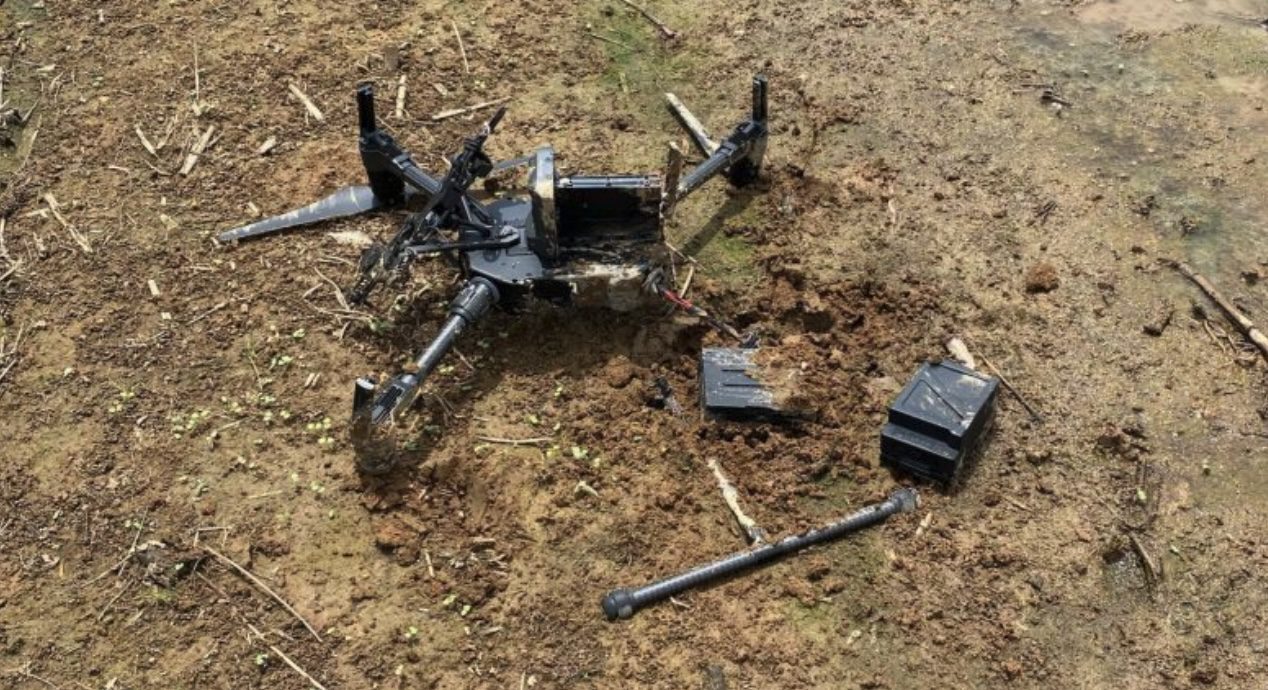
Drone crashes in Paris, while relatively infrequent, carry significant economic and social costs. These costs extend beyond the immediate repair of damaged property and encompass broader impacts on Parisian businesses, residents, and the city’s image. Understanding these consequences is crucial for developing effective preventative measures and mitigation strategies.
The economic burden of drone accidents in Paris is multifaceted, ranging from direct repair costs to indirect losses in productivity and tourism. Similarly, the social impact ripples through communities, affecting public trust, business operations, and the overall sense of security. Accurately quantifying these costs is challenging due to the limited data available on specific drone accident incidents and their associated economic repercussions.
Economic Costs of Drone Accidents
The economic costs associated with drone crashes in Paris are substantial and can be categorized into several key areas. These include direct costs such as repairs to damaged property (buildings, vehicles, infrastructure), insurance claims processing and payouts, and emergency response costs. Indirect costs encompass lost productivity due to disruptions in services, business closures, and potential legal fees related to liability and compensation.
Social Impact of Drone Accidents
Drone accidents in Paris can have profound social consequences. Public perception of drone safety is directly influenced by the occurrence and media coverage of such events. Negative publicity can lead to decreased tourism, impacting local businesses reliant on tourism revenue. Furthermore, accidents involving injuries or fatalities can cause significant distress and trauma to individuals and their families. Community trust in the responsible operation of drones can also be eroded, potentially leading to calls for stricter regulations.
Examples of Economic and Social Consequences
| Type of Cost | Specific Example | Monetary Value (if applicable) | Social Impact |
|---|---|---|---|
| Repair Costs | Damage to a historical building’s roof by a falling drone requiring extensive repairs. | Estimated €50,000 – €100,000 (depending on the extent of damage and materials) | Negative impact on cultural heritage and tourism. Public concern about drone safety near historical sites. |
| Insurance Claims | A drone crashing into a parked car, requiring repairs and causing inconvenience to the car owner. | €2,000 – €5,000 (depending on the extent of car damage) | Increased insurance premiums for drone operators. Frustration and inconvenience for the car owner. |
| Lost Productivity | A drone crashing into a power line causing a temporary power outage in a commercial district. | Difficult to quantify precisely, but could involve significant losses for businesses dependent on electricity. | Disruption to business operations, potential loss of revenue, and public inconvenience. |
| Emergency Response Costs | Deployment of emergency services (police, fire department) to secure a crash site and investigate the incident. | Variable, depending on the resources deployed and duration of the response. | Strain on public resources. Public awareness of potential risks associated with drone accidents. |
| Negative Publicity | Widespread media coverage of a drone crash near a major tourist attraction. | Indirect cost, potentially leading to decreased tourism and revenue for local businesses. | Damage to the city’s image, decreased tourism, potential for increased anxiety about drone safety. |
Last Word
The rise of drone incidents in Paris highlights the urgent need for a multi-faceted approach to safety and regulation. While technological advancements offer promising solutions, responsible operation and robust regulations remain crucial. By understanding the causes, consequences, and potential preventative measures, Paris can better navigate the challenges and benefits of integrating drone technology into its urban landscape, ensuring both innovation and safety coexist.
Q&A
What are the penalties for illegal drone operation in Paris?
Penalties vary depending on the severity of the violation but can include hefty fines and even imprisonment.
How can I report a drone incident in Paris?
Contact the local authorities or police immediately. Specific contact information will vary depending on the location and nature of the incident.
Are there designated drone flight zones in Paris?
Yes, specific areas are designated for drone flight. Consult the relevant aviation authorities for up-to-date information on authorized flight zones.
What insurance is required for operating a drone in Paris?
Liability insurance is usually required, but specific requirements may change. Check with relevant authorities before flying.
